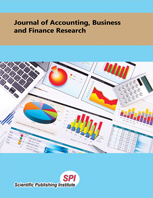Implementation of Continuous Auditing for the Public Sector in Nigeria
DOI:
https://doi.org/10.20448/2002.11.19.23Keywords:
Continuous auditing, Continuous auditing, Model and implementation of continuous auditing.Abstract
Aims: The main purpose of the study was to access the challenges the government financial system in Nigeria has undergone in the recent times and with the aim of proposing a model that could be used to implement continuous auditing by the Public Sector Audit Organizations. Study design: Adoption of existing model and survey using questionnaires. Place and Duration of Study: Nigeria, 2014.Methodology: The existing continuous auditing models were studied and the integrated Continuous Auditing, Monitoring and Assurance Conceptual Model was adopted for use. The model was tested using data collected using questionnaires. Data was collected from 100 auditors in the Public Sector Audit Organizations. The Audit Command Language software (a Computer Aided Audit Tool) and a database system of a government ministry were used to demonstrate how data can be obtained directly from a client system.
Results: The study found the need for training in the skills necessary for continuous auditing and the acquisition of Information and Communication Technology resources and infrastructure were necessary in realizing continuous auditing. Conclusion: The Integrated Continuous Auditing, Monitoring and Assurance Conceptual Mode would offer a good starting point in the implementation of continuous auditing by the Public Sector Audit Organization.


